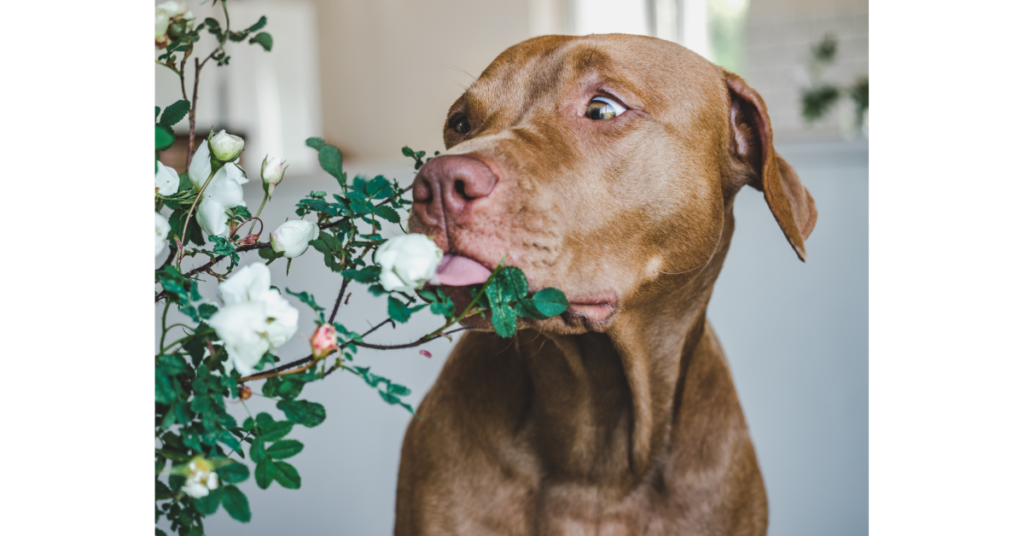
The health and safety of our beloved canine companions should always be a top priority when creating an inviting atmosphere in the home. This means ensuring that all the plants we bring into our living spaces are safe for dogs without causing any harm.
Nevertheless, we’ve done the legwork and rounded up several large indoor plants safe for dogs, so you can decorate to your heart’s content:
- Spider Plant
- Boston Fern
- Birds Nest Fern
- African Violet
- Calathea Orbifolia
- Rubber Plant
- Money Tree
- Kentia Palms
- Friendship Plant
Plants can be great for brightening up a room and adding a touch of greenery, but with so many different species of plants available, it can take time to decipher which ones are safe and worth bringing into the home.
Many houseplants contain toxic compounds that can be harmful when ingested by dogs, making it vital to select dog-safe options.
Check out each of the plants mentioned to make an informed decision.
Ranking of Large Indoor Plants Safe For Dogs
1.Spider Plant:
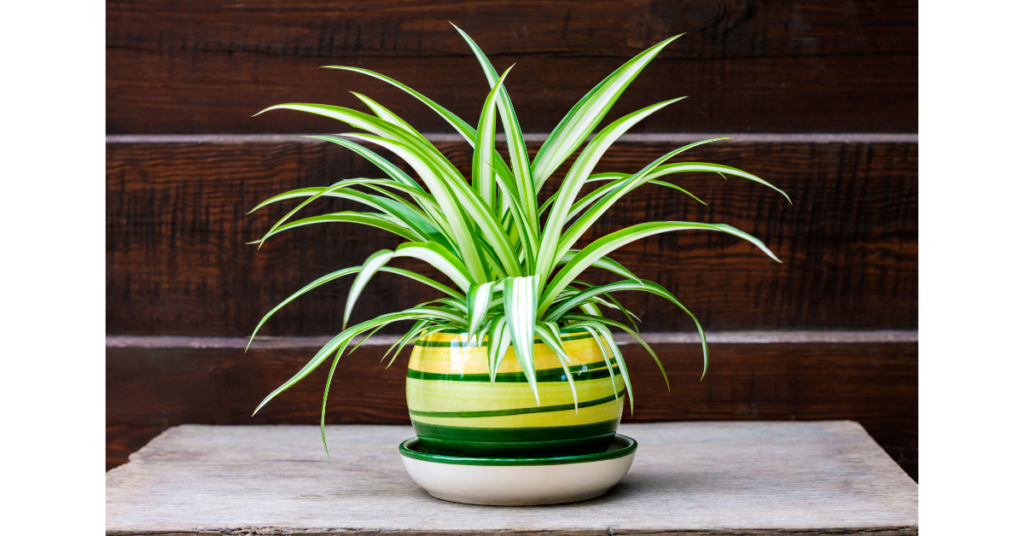
There is no doubt that the Spider Plant is an excellent choice for pet owners. This resilient houseplant is easy to grow and maintain, even if you’re a self-proclaimed “black thumb.”
It can help purify air toxins in your home and won’t harm your furry friends.
It prefers indirect bright light and temperatures between 35-65 degrees F. Temperatures above 95 degrees F will affect this plant by increasing transpiration hence the uptake of toxic micronutrients.
Regularly check for pests, and water it when the soil has dried. It’s important to remember that Spider Plants do better in moist soil than overly wet soil, so don’t over-water them.
2.Boston Fern:

This fern is an excellent pick if you are looking for an easy-care plant that can thrive in your home with minimal effort. It requires light watering and feeding every two months, making it perfect for busy pet parents.
Boston Ferns are safe for both cats and dogs, so if your furry friend happens to take a nibble, it won’t cause any harm. To ensure optimal humidity levels, you can also set its pot in a tray of pebbles filled with water and mist its leaves regularly.
The Boston Fern will create an inviting atmosphere in your home with its lush fronds and trailing stems.
3.Birds Nest Fern:

This is yet another pet-safe and low-maintenance houseplant that can tolerate neglect and thrive. It prefers indirect light and temperatures between 70-90 degrees F and should be watered when the top inch of soil is dry.
This plant does not require frequent watering or fertilizer to remain healthy, which makes it ideal for busy pet owners. Its broad fronds make it a beautiful addition to any room, and its non-toxic qualities make it safe for cats and dogs.
4. African Violet:
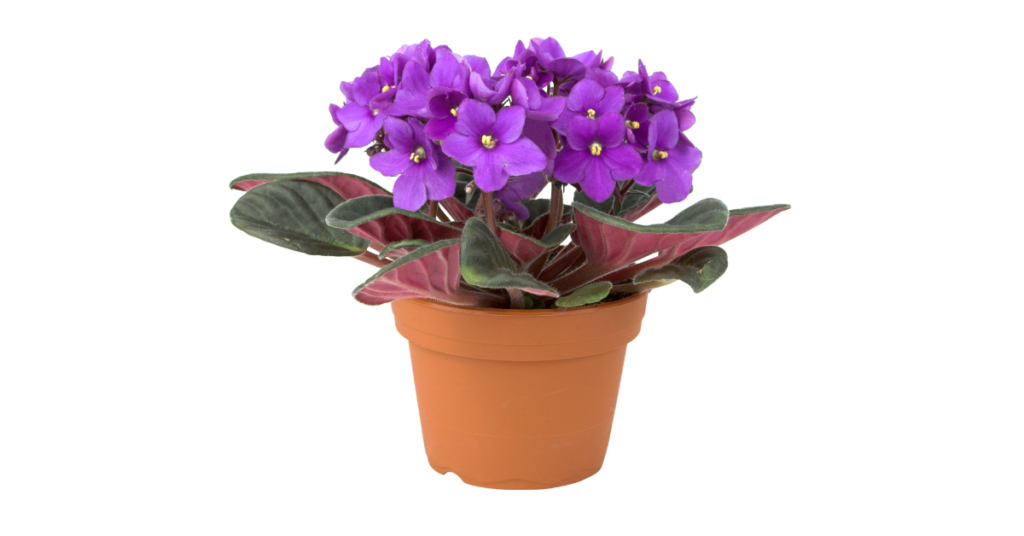
You have seen the definition of beauty once you’ve seen an African Violet. A beloved houseplant for many, this vibrant bloom will turn heads with its vivid colors and delicate petal formation.
It is even better that African Violets are aesthetically pleasing and safe for cats and dogs—a true win-win! It requires bright, indirect light and temperatures between 65-8 degrees F.
Be sure to water the soil when it’s dry and fertilize every two weeks with a liquid fertilizer formulated for African Violets.
5.Calathea Orbifolia:
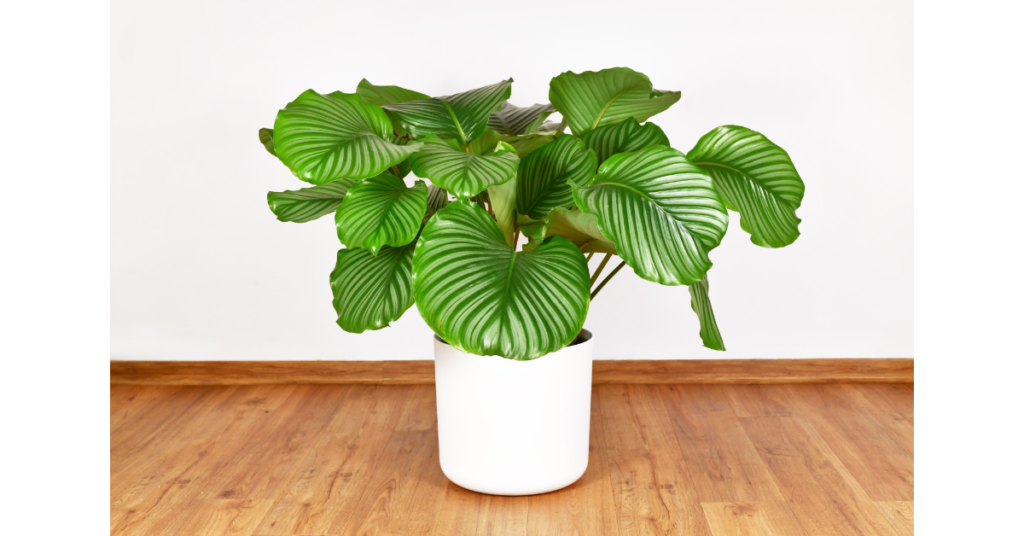
The Calathea Orbifolia boasts stunning foliage in iridescent shades of green, purple, and pink. This tropical beauty will make your home look like a rainforest paradise—without worrying about harming your precious pets.
This plant requires indirect light and temperatures between 64.4-75.2 degrees F. Water when the top inch or two of soil is dry, being careful not to over-water it.
Mist the leaves regularly to keep the humidity levels up and fertilize bi-monthly with diluted fertilizer.
6.Rubber Plant:
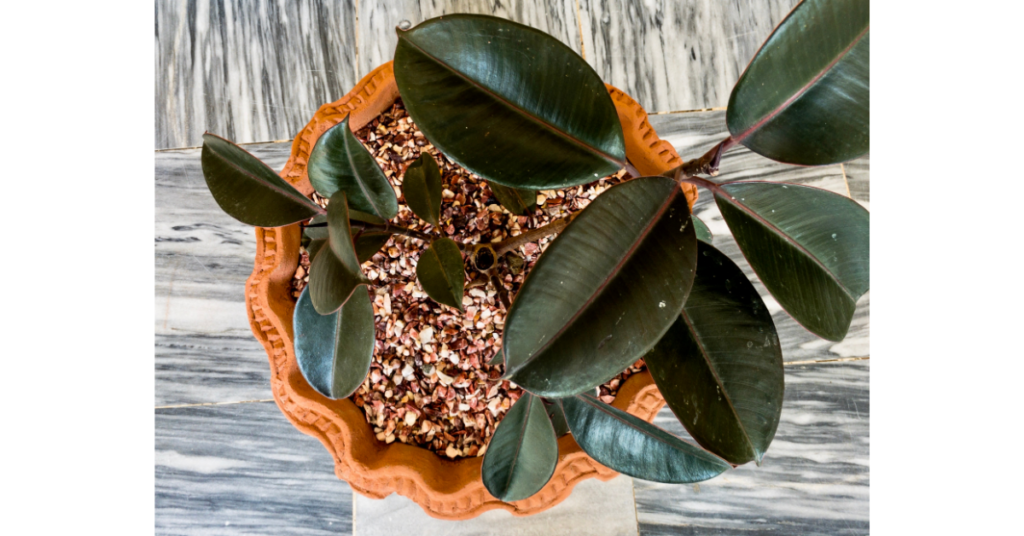
The deal is sealed with the Rubber Plant! Not only can this be a great air purifier, but it is also safe for cats and dogs.
It prefers bright indirect light and temperatures between 75-80 degrees F daytime and 60-65 degrees F night. Water when the soil dries out and wipes down its large leaves to keep them dust-free.
Fertilize once a month with a liquid fertilizer during the growing season and once every two months during the winter.
7.Money Tree:

The Money Tree is known for its good luck charm and one of the best large houseplants that are safe for cats and dogs.
This resilient plant can tolerate indirect sunlight, shade, and temperatures between 65-8O degrees F. Water when the top inch of soil is dry and fertilize every two months with a liquid fertilizer to keep it thriving.
8.Kentia Palms:
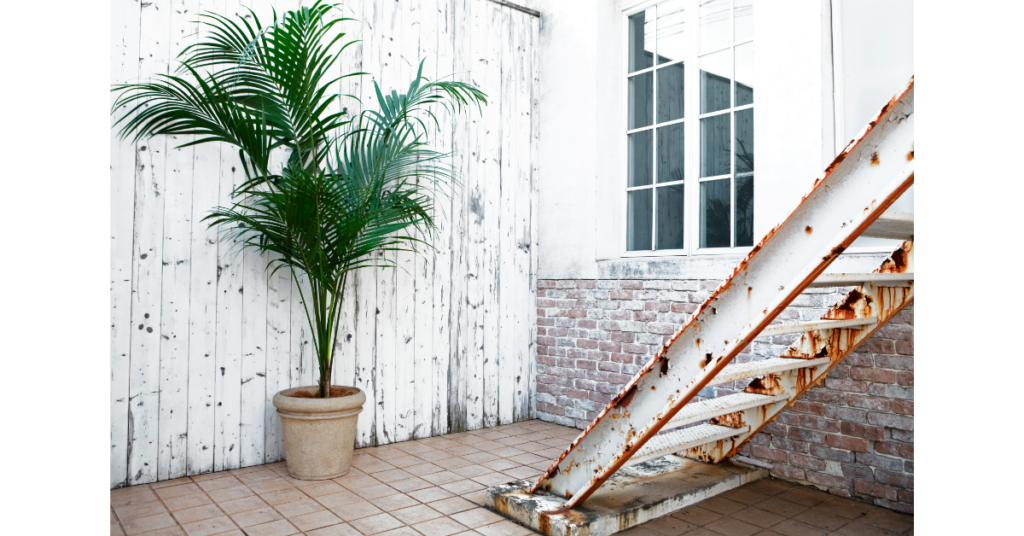
The Kentia Palms are one of nature’s most graceful houseplants, making them an absolute crowd-pleaser. The best part is that they are also safe for cats and dogs, so you can have this tropical beauty in your home without worrying about your pet’s safety.
These palms need bright, indirect light and temperatures as low as 25 degrees F—water when the top few inches of soil have dried out. Fertilize every two weeks with a liquid fertilizer during the growing season.
9.Friendship Plant:
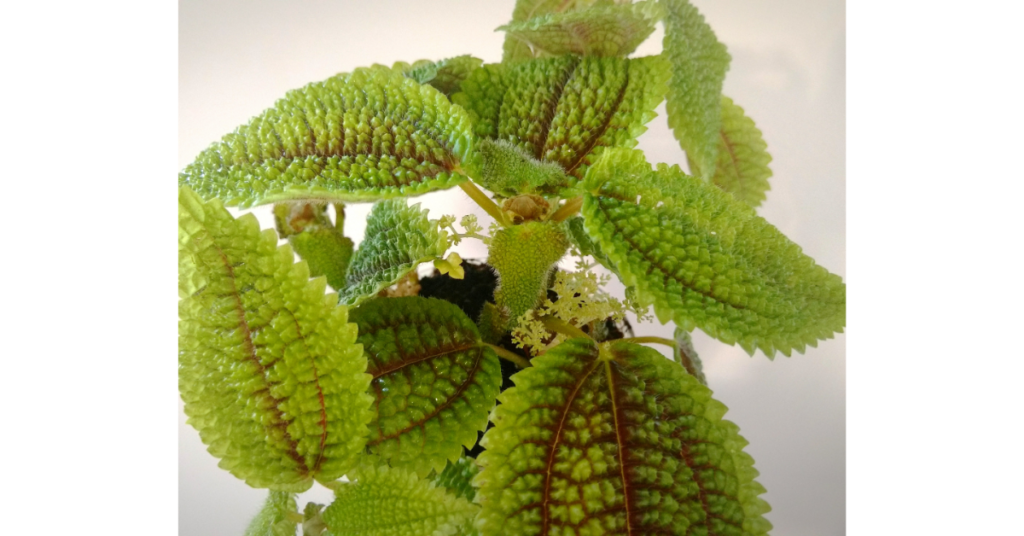
The Friendship Plant is an excellent addition to any indoor space and is pet-safe. This easy-to-care-for houseplant requires bright, indirect light and temperatures between 60-80 degrees F.
Water when the top inch of soil has dried out and fertilize every two weeks with a diluted liquid fertilizer. Its lacy foliage and bright silver markings make it an eye-catching addition to any room.
Whatever type of pet you have, these nine houseplants will surely be a perfect addition to your home.
Importance of Selecting Safe Indoor Plants for Dogs
Having a pet in the home is about more than just playing, cuddling, and entertainment. It’s also essential to provide them with a safe environment. That includes making sure that your indoor plants are pet-safe.
Toxic plants can cause vomiting, diarrhea, seizures, and even death if ingested by pets. Therefore, knowing which plants are safe and which could potentially harm your pet is essential.
By selecting pet-safe houseplants, you can enjoy the beauty of indoor plants without worrying about the safety of your furry friends.
The Criteria for Selecting Pet-Safe Indoor Plants
We have outlined some critical criteria and ranked the top choices below to help you choose the best large indoor plants safe for dogs.
1. Level of toxicity to dogs
When choosing plants for your home, it is essential to ensure they are non-toxic and will not cause harm if ingested by pets.
2.Ease of care and maintenance
It is also essential to consider how easy the plant is to care for. Some plants may require more effort than others in pruning, watering, and fertilizing, so choosing one that fits well into your lifestyle is essential.
3.Size and suitability for indoor spaces
The plant’s size and shape should be considered, as some may be too large for indoor spaces.
4.Cost and availability
Finally, it is vital to consider the cost and availability of the plant. It may be worth choosing an alternate option if a particular species is hard to come by or too expensive.
Benefits of Incorporating Large Indoor Plants Into Home Décor
Having indoor plants in the home is not only beneficial for your pet’s safety, but it can also have numerous other benefits.
Improved air quality: Plants act as natural purifiers and improve air quality by naturally removing toxins from the air and increasing oxygen levels.
Reduced stress levels: Studies have found that having plants in the home can reduce stress and provide mental relief.
Decorative addition: Indoor plants are an attractive way to spruce up any room, and they come in various shapes, sizes, and colors.
Increase productivity: Plants have been found to boost concentration levels, making them perfect for studies or home offices.
FQAs
What is the best indoor tree for a pet owner?
The best indoor tree for a pet owner is the Areca Palm. This attractive plant is non-toxic to cats and dogs, requires minimal care and maintenance, and has large fronds that make it ideal for adding height and texture to any space.
It is also long-lasting and can act as an air purifier when grown indoors, making it a perfect choice for pet owners.
Can dogs be around houseplants?
Yes, dogs can be around house plants as long as the plants are non-toxic and don’t pose any risk to your pet. Some of the best pet-safe options include pothos, snake plants, peace lilies, spider plants, ZZ plants, ficus trees, and rubber plants. Make sure to research the toxicity levels of any plant before introducing it to your home.
It is also essential to ensure the plants are out of reach from your pet, as some can be toxic if ingested. With proper care and research, dogs and houseplants can live peacefully together!
Is snake plant safe for dogs?
Yes, the snake plant is safe for dogs. This attractive plant is non-toxic to cats and dogs, making it a great addition to any pet-friendly home.
Can indoor plants make dogs sick?
No, indoor plants typically do not make dogs sick unless they are toxic. It is crucial to research any plant species before introducing it into your home, as some may be poisonous if ingested.
Final Plant!
Although caring for large indoor plants may seem intimidating at first, the payoff is worth it if you’re a pet parent looking to bring a bit of green into your pup’s life. You can find many safe plants that are both beautiful and able to thrive indoors with minimal maintenance.
Besides looking great, they help to improve air quality and create natural spaces within in-home environments – something our furry friends especially love!
Besides being safe and healthy for your pet companion, these plants can relieve stress, stimulate natural behavior and calm them down so you don’t have to worry about damage from chewing or digging.
So what are you waiting for? Make sure to research which plants are best suited for your home, and then select one of the five large-leafed houseplants on our list today – guaranteed to bring color and joy into your dog’s life!